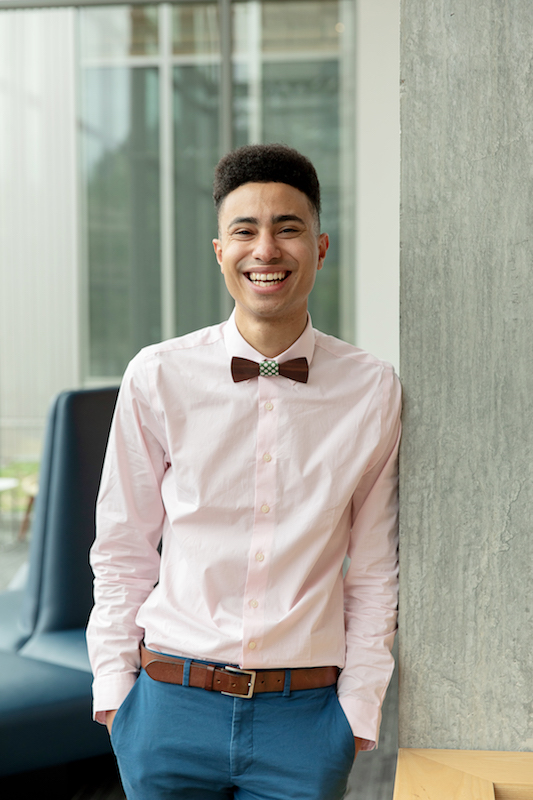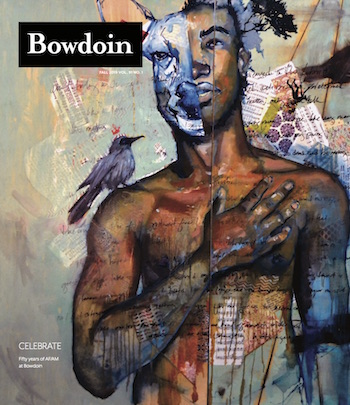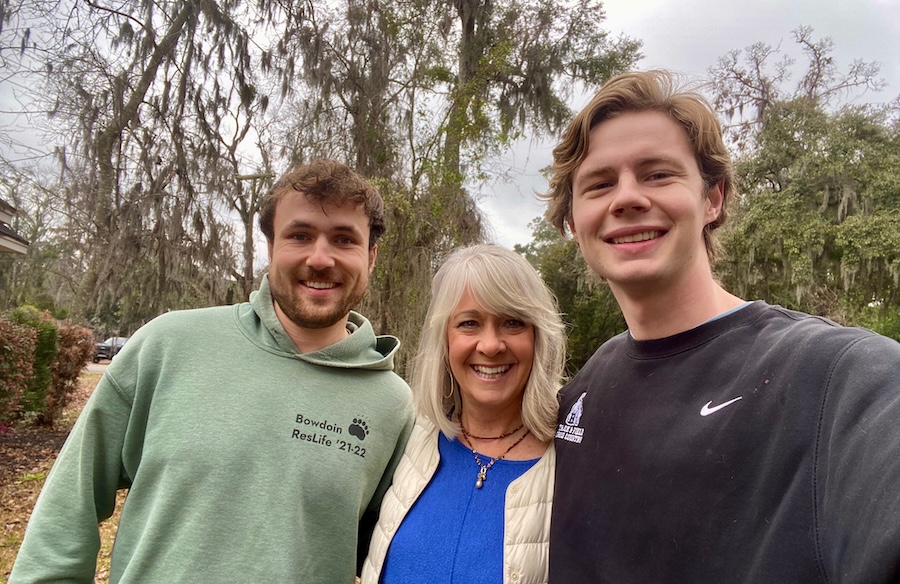Studying Behavior
By Bowdoin Magazine
What initially attracted me to neuroscience was my Bio 109 course at Bowdoin. I knew a little bit about the brain (in a science capacity) prior to this course. But, once we got to the neuroscience section of the course, I knew right away that I wanted to study neuroscience. Interestingly enough, at the time I was also doing research in Seth Ramus's lab, studying episodic memory. So, the combination of my Bio 109 course and my experience in professor Ramus's lab really made me attracted to neuroscience.
My current career was really decided during graduate school, but the experiences in Seth Ramus's lab really informed my decision to pursue graduate school. I was fortunate enough to be able to gain research experience all four years at Bowdoin, which wouldn't have been possible without the Bowdoin Science Experience. Not only was I doing scientific research during the academic year, but I was also able to pursue research opportunities at Bowdoin and elsewhere during the summers. Finally, during my senior year at Bowdoin, I gained more experience with molecular techniques while I was pursuing a research opportunity with then-visiting-professor Bojana Zupan. When I left Bowdoin, I had a plethora of experience with behavioral and molecular techniques, which prepared me for graduate school.
One of the biggest challenges I faced during my PhD was the feeling of imposter syndrome. I walked around for two to three years feeling like I didn't belong in the program. Everyone seemed like they knew how to ask all the right questions, and I felt like if I ever asked a question that I would sound dumb. It really took a while to get over that feeling. As for rewarding experiences, I would have to say when I received the email that my first lead author publication was accepted. I had a flood of emotions when I saw that email. I laughed, I cried, I felt relieved, and I mainly felt the feeling of belonging. That was when I really felt like I knew what I was talking about. My imposter syndrome was led by two things: being an underrepresented minority in a field where not many people looked like me, and being queer and not out to my family, some friends, and professors. I think coming out really alleviated some of the imposter syndrome and made me emotionally and mentally accept myself. That led me into feeling more confident about being a scientist and stopped me from intellectually holding myself back. I honestly think if I hadn't come out, I probably would have left graduate school.
I don't necessarily believe that STEM is becoming more diverse. There might be an increase in the number of people from diverse backgrounds in STEM, but when you look at the percentage of underrepresented minorities (URM) in STEM compared to the general population, there is a significant racial disparity. For example, a study by Ramos et al in 2017 explored the diversity of graduates from bachelor’s, master’s, and doctoral degree neuroscience programs in the United States from 1995–2015. They found that, even though there is an increase of the number of master's and doctoral degree students, the percentage of URM graduates has stayed steady throughout time. Even in my own experience, I haven't seen an increase in diversity in STEM. This year, I became the first African American male to graduate with a PhD from my entire graduate school—ever! Things like that shouldn't be happening in 2019. All that aside, I think diversity adds a lot to higher education and STEM fields. It adds so many different opinions and perspectives, and increases innovation (all have been scientifically proven). I think STEM needs to be better at increasing diversity and breaking down those systemic barriers that exist.
Does playing Mario Kart count as an extracurricular? If not, I played intramural basketball and I was a part of a dance group called EleMental. If you want to see some pretty ridiculous but fun stuff, check out EleMental "MTV Mix" on YouTube [LINK]. As for now, being in the Pacific Northwest, I spend most of my time floating rivers, hiking (need to do more), running, and trying new beers and wines. Occasionally, I dabble in photography, but it is very amateur photography.
If I could have dinner with any historical figure, if Barack Obama counts, then definitely him. If not, I would say I would love to have dinner with Maya Angelou. She paved the way for so many people, and whenever I hear a speech or poem from her I feel empowered. I really just want to collect all her wisdom.
Prairie voles are socially monogamous rodents that prefer alcohol over water when given the choice. They form these things called pair bonds, meaning they have a partner for life and, if they lose that partner, they show depressive symptoms. My research on “The Relationship Between Sociality and Alcohol Consumption in the Prairie Vole Rodent Model” was to understand how alcohol impacts these pair bonds in male and female prairie voles. Mainly, I explored what happens to pair bonds when there is a discrepancy in alcohol intake between partners and what brain areas are altered. We know in humans that when there is a discrepancy in alcohol intake between partners in long-term relationships, that it leads to increases in rates of separation compared to partners who consume similar levels of alcohol (being low or high levels). The short version is that I found that, in female prairie voles, a discrepancy in alcohol drinking between partners led to no disruption in pair bond expression. However, in male prairie voles, I saw that a discrepancy in alcohol drinking led to a decrease in pair bond expression compared to heavy drinking partners and abstinent drinking partners. This behavioral phenomenon was accompanied by an increase in activation in the Periaqueductal Gray (a region known to play a role in sociality and pain). This is very basic science, but this research could potentially help figure out potential pharmacotherapies for alcohol addiction in the future and how sociality plays a role in the effects of potential pharmacotherapies.

This story first appeared in the Fall 2019 issue of Bowdoin Magazine. Manage your subscription and see other stories from the magazine on the Bowdoin Magazine website.



